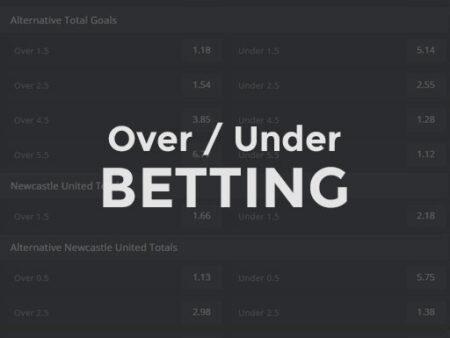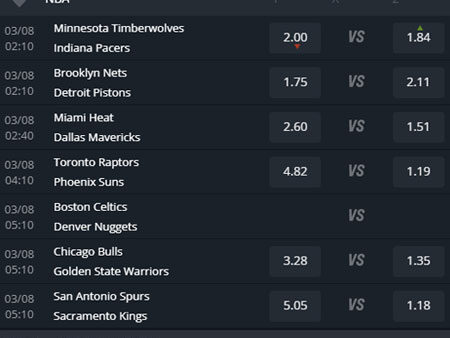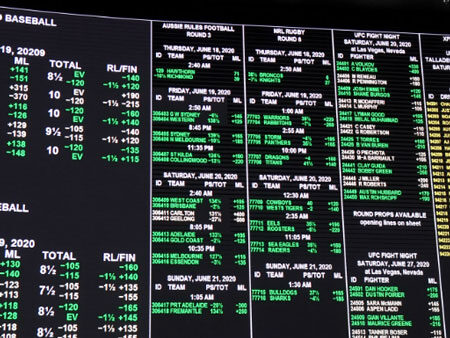Key Takeaways
- Handicap betting adjusts the odds by giving the underdog a head start or imposing a virtual deficit on the favorite, ensuring more balanced betting opportunities.
- It offers an alternative to traditional betting lines, especially in matches where there’s a clear favorite and underdog, by making both sides appealing for bettors.
- Whether it’s football, rugby, basketball, or horse racing, handicap betting is versatile, enriching the betting landscape across numerous sports.
- Bettors must understand not just who will win or lose, but also how team dynamics and handicaps affect the outcome, fostering a deeper engagement with the sports they bet on.
- If you accurately predict how teams will perform against the spread, you can find value in bets that others might overlook, potentially leading to higher returns.
- Asian Handicap (Alternative Spread) is a popular form that eliminates the possibility of a draw and offers split handicaps, providing a nuanced betting approach that’s favored in football betting.
Table of Contents
What Is Handicap Betting?
Handicap betting, a term synonymous with line betting, the spread, points betting, and Asian handicap, is a betting format that levels the playing field between two mismatched teams.
By assigning a virtual advantage or disadvantage to specific competitors, bookmakers can transform any sporting event into an evenly matched contest, regardless of the actual odds.
This betting strategy is prevalent in point-based sports like football, basketball, and rugby, as well as in racing events, particularly horse racing.
It not only affects the way odds are presented but also requires bettors to have a solid understanding to place effective bets.
Handicap betting is not just about who wins or loses; it’s about understanding the nuances of each team’s performance and using that knowledge to predict outcomes within the context of the handicaps given.
How are Handicap Bets Presented?
Handicap bets are presented by bookmakers in a way that balances the playing field between two unevenly matched teams or players.
The presentation includes the team or player names followed by the handicap value, which could be positive (+) for the underdog or negative (-) for the favorite. The odds for each outcome are also displayed. Here’s how it typically looks:
Example from Football (Soccer):
- Liverpool (-1) 2.0
- Handicap Draw (-1) 3.5
- Everton (+1) 2.5
In this example, Liverpool must win by more than one goal for a bet on them to win. A bet on Everton wins if they draw or win the match. The handicap draw means the match must finish with Liverpool winning by exactly one goal.
Handicap Betting vs. Spread Betting
Handicap betting and spread betting are similar, with both adjusting the final score to make a game more even for betting purposes. The term “handicap” is more commonly used in European markets, while “spread” is the preferred term in American markets.
Why Do We Have Handicap Bets?
Handicap bets are designed to level the competitive field between two teams or players where there is a clear favorite and underdog.
This betting format adjusts the odds by offering a virtual advantage or disadvantage to certain competitors, making the event more balanced and betting on it more appealing.
The primary goal is to provide bettors with more competitive and enticing odds, ensuring that even matchups perceived as one-sided offer value and excitement.
Handicap betting not only increases the market’s attractiveness but also encourages wider participation from bettors by offering a more diverse range of betting opportunities.
How to Place a Handicap Bet
- Select a reputable bookmaker that offers competitive handicap bets.
- Navigate to the sports section and select the event you’re interested in.
- Look for the handicap market and review the options available. Make sure that the option you choose is adequate for the analysis you made for that event.
- Decide on your stake and place your bet on the chosen handicap. Ensure you understand the terms and how the handicap affects the potential outcome.
- Double-check the selection and odds before confirming your bet.
The 4 Most Popular Types of Handicap Bets
- Single Handicap: This is the standard form where points or goals are added or subtracted from the team you bet on.
- No Draw Handicap Match Betting: To avoid draws, bookmakers offer half handicaps (e.g., +1.5), ensuring a definitive outcome in terms of betting.
- Handicap League Betting: At the season’s start, teams are given handicaps based on their projected performance, offering a season-long betting adventure.
- Asian Handicap Betting: Popularised in Asia, this variant involves whole and half numbers to eliminate the possibility of a draw, with split handicaps allowing for more nuanced betting.
Understanding Single Handicap in Betting
Single handicap betting applies a goal or point advantage to the underdog to level the playing field. It’s commonly used when there’s a clear favorite in a match. The handicap is added to the final score to determine the betting outcome.
Handicap 0.5
In a 0.5 handicap, the underdog starts with a half-goal or half-point lead. This handicap ensures there are no ties, as it’s impossible to score half a goal or point in most sports.
The 0.5 handicap is the same as a double chance bet (that includes the draw) on an event that has 3 possible outcomes (eg: in football/soccer where team A can win, draw, team B can win).
Example: Team A (-0.5) vs. Team B (+0.5). If you bet on Team A, they must win by at least one point or goal for your bet to succeed.
Handicap 1
With a 1-point or 1-goal handicap, the underdog starts with a one-point lead.
Example: Team A (-1) vs. Team B (+1). If Team A wins by more than one point or goal, bets on Team A win. If Team A wins by exactly one, it’s a draw, and bets are refunded.
Handicap 1.5
A 1.5 handicap increases the underdog’s starting lead to one and a half points or goals, eliminating the possibility of a draw.
Example: Team A (-1.5) vs. Team B (+1.5). Team A needs to win by at least two points or goals for bets on them to pay out.
Asian Handicap Betting Explained
Asian Handicap betting is a sophisticated form of betting on football (soccer) and other sports where a handicap is applied to level the playing field between two mismatched teams.
Originating in Indonesia and gaining popularity worldwide, this betting style eliminates the possibility of a draw by assigning virtual deficits or advantages to teams before the match starts.
It’s designed to offer two betting outcomes, reducing the risk for bettors and often providing more value in terms of odds.
How It Works
In Asian Handicap betting, teams are handicapped according to their form, so the stronger team must win by more goals for a bettor to secure a win on that team.
Handicaps typically range from one-quarter goal (+0.25, -0.25) to several goals (+2.5, -2.5) and can include half goals and whole goals to eliminate the chance of a draw, which is a common outcome in football.
The betting lines can adjust as more information about the game becomes available, influencing bettors to weigh the odds and the potential outcomes more carefully.
Asian Handicap Bet Examples
Single Handicap (+1, -1): If Barcelona plays against a weaker team, say Levante, Barcelona might be given a -1 handicap. This means Barcelona starts the game with -1 goals. For a bet on Barcelona to win, they need to win by more than one goal. If you bet on Levante (+1), and Barcelona wins the game 1-0, the bet on Levante would win because, for the purposes of the bet, the game ended in a draw.
Quarter Goal Handicap (+0.25, -0.25): This introduces the concept of splitting your stake over two handicaps. For example, if you bet on a team with a +0.25 handicap, and the match ends in a draw, you lose half your stake, and the other half is returned to you. If the team wins, you win the bet.
Half Goal Handicap (+0.5, -0.5): No possibility of a draw in the bet. If you bet on a team with a +0.5 handicap, a draw or win for that team means you win the bet. If the team loses, so does your bet. Conversely, if you bet on a team with a -0.5 handicap, that team must win for you to win the bet.
Full Goal Handicap (+1, -1) with a Draw Option: Similar to the single handicap, but with an added twist. If the team with a -1 handicap wins by exactly one goal, the outcome is a draw, and bettors receive their stakes back. This option adds a safety net for those betting on favorites.
No Draw Handicap Match Betting
No draw handicap match betting eliminates the possibility of a draw in the betting outcome by using half-point handicaps (e.g., 0.5, 1.5). This ensures there is always a clear winner in the bet, regardless of the actual match result. It’s particularly popular in sports where draws are common, like soccer.
Example:
Chelsea (-1.5) 1.8
Newcastle (+1.5) 2.0
In this scenario, for a bet on Chelsea to pay out, Chelsea needs to win by two or more goals. A bet on Newcastle wins if they draw, win, or lose by just one goal, thanks to the 1.5-goal start.
Handicap League Betting
Handicap league betting involves placing bets on teams over the course of a season, with each team given a different starting points handicap.
This type of betting is popular before the start of the season and aims to level the playing field by accounting for the perceived strength of each team.
Example in the English Premier League:
- Manchester City (0 points)
- Leicester City (+15 points)
- Brighton (+30 points)
Here, Manchester City might be the favorites to win the league, so they start with no additional points. Leicester City, seen as less likely to win, start with a 15-point advantage, while Brighton, considered even less likely, start with a 30-point advantage.
The bet is settled based on the actual league points plus the handicap points at the end of the season. This format makes betting more competitive and intriguing, offering value even for teams unlikely to win the league outright.
Handicap Betting Real Life Examples
Football (Soccer):
Manchester City vs. Fulham, with Manchester City given a -2 handicap. For bets on Manchester City to win, they must beat Fulham by more than two goals. A bet on Fulham would win if they lose by less than two goals, draw, or win the match.
Rugby:
New Zealand vs. Italy, where New Zealand has a -14 handicap. For a bet on New Zealand to pay out, they must win by more than 14 points. Betting on Italy with a +14 handicap means your bet wins if Italy wins, draws, or loses by less than 14 points.
Basketball:
Los Angeles Lakers vs. Miami Heat, with the Lakers given a -7.5 handicap. Lakers must win by at least 8 points for a bet on them to succeed. A bet on the Heat pays out if they win, or lose by 7 points or fewer.
Tennis:
In a match between Roger Federer and a lower-ranked player, Federer might be given a -5.5 game handicap. To win a bet on Federer, he needs to win the match by at least 6 games.
How are Handicap Lines Calculated?
Handicap lines are determined by bookmakers based on several factors, including current team form, historical performance, player injuries, and other variables that could impact the game’s outcome. The process involves a thorough analysis to estimate each team’s potential performance gap.
The bookmakers then apply a handicap (expressed in goals, points, or other units of measure depending on the sport) to offset this difference, aiming to offer bets where both outcomes have roughly equal odds, thus creating a more balanced betting proposition.
Alternative Handicap Bets
Alternative handicap bets offer bettors different lines and odds from the standard handicap bets, allowing for customized betting strategies based on specific predictions about the game’s outcome.
These can range from slight adjustments to the standard handicap to more significant changes that dramatically alter the betting landscape.
Top Strategy and Tips for Handicap Betting
Understand the Sport and Teams:
Research the teams’ current form, head-to-head records, and any injuries or suspensions. In sports like football and rugby, the home-field advantage can also significantly impact the outcome.
Consider the Weather and Conditions:
Weather can play a crucial role, especially in outdoor sports. Rain can level the playing field in rugby, while wind can impact tennis and golf significantly.
Look for Value Bets:
Sometimes, bookmakers might over or undervalue a team’s handicap based on public perception. Identify these opportunities where the handicap does not truly reflect the teams’ potential performance.
Manage Your Bankroll:
Never bet more than you can afford to lose. Handicap betting can offer lucrative returns, but it’s essential to manage your bankroll wisely and avoid chasing losses.













